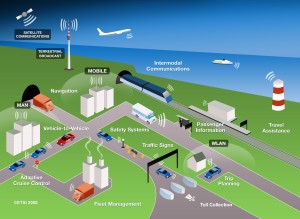
Hier eine Information vom Verband der Automobilindustrie (VDA) für alle deutschen Citroën-Clubs, die wir hiermit gern weiterleiten (english text below):
EU verabschiedet Richtlinie zur Einführung intelligenter Verkehrssysteme – Interessen von historischen Fahrzeugen sind in der Rahmenrichtlinie sichergestellt
Berlin, 13. Dezember 2010.
In diesem Jahr wurde die Richtlinie 2010/40/EU des europäischen Parlaments diskutiert und verabschiedet. In dieser wird der Rahmen für die Einführung intelligenter Verkehrssysteme (ITS) im Straßenverkehr und für deren Schnittstellen zu anderen Systemen formuliert. Mit dem Einsatz von ITS soll der Verkehr sicherer und effizienter (und damit umweltfreundlicher) gestaltet und die Verkehrsteilnehmer mit wichtigen Informationen versorgt werden. Dabei spielt die Vernetzung elektronischer Systeme von Fahrzeug- und Verkehrsinfrastruktur eine wesentliche Rolle.
Die wichtige Voraussetzung einer entsprechenden on-board Technologie ist für historische Fahrzeuge nicht nachrüstbar. Deswegen hat sich der Weltverband für historische Fahrzeuge – Fédération Internationale des Véhicules Anciens (FIVA) – bereits seit der Formulierung des ersten Entwurfs der Richtlinie dafür eingesetzt, die Interessen der vielen Oldtimerfahrer in der Europäischen Union entsprechend zu berücksichtigen. Diese
Aktivitäten wurden durch den Verband der Automobilindustrie (VDA) und weiteren nationalen Verbänden nachdrücklich unterstützt. Dank dieser Bemühungen enthält die Richtlinie nun den Passus:
“…Für Fahrzeuge, die überwiegend aufgrund ihres historischen Interesses betrieben werden (… ), sollen die in dieser Richtlinie festgelegten Bestimmungen und Verfahren nicht gelten…”
Es bleibt aber zu beachten, dass eine künftige flächendeckende Einführung von ITS für historische Fahrzeuge durchaus Konsequenzen haben kann. Auch wenn eine Nachrüstung der für die Teilnahme an ITS notwendigen Technik nicht gefordert wird, besteht die Gefahr, dass sich Oldtimer langfristig in einem Umfeld von immer weiter mit komplizierter Elektronik aufgerüsteten Fahrzeugen zu technischen Dinosauriern entwickeln. Die Teilnahme mit
Oldtimern am öffentlichen Straßenverkehr könnte dann als Sicherheitsrisiko eingestuft werden. Um auch künftig die notwendige Akzeptanz von Behörden und der breiten Öffentlichkeit für die notwendigen Ausnahmeregelungen zu finden, bedarf es einer großen Disziplin beim Betreiben dieser „wichtigsten Nebensache der Welt“. Der Verband der Automobilindustrie wird sich in diesem Sinn weiterhin dafür einsetzen, dass historische Fahrzeuge auch in Zukunft auf öffentlichen Straßen bewegt werden können.
weiterführende Info:
The ETSI ITS website:
http://www.etsi.org/website/Technologies/IntelligentTransportSystems.aspx
European Commission ITS website:
http://ec.europa.eu/transport/its/
english translation, by ACI-D, please bear with me when not 100% correct:
Intelligent Transport Systems (ITS) can significantly contribute to a cleaner, safer and more efficient transport system. A new legal framework from the European Commission (Directive 2010/40/EU) was adopted on 7 July 2010 to accelerate the deployment of these innovative transport technologies across Europe. This Directive is an important instrument for the coordinated implementation of ITS in Europe. It aims to establish interoperable and seamless ITS services while leaving Member States the freedom to decide which systems to invest in.
Under this Directive the European Commission has to adopt within the next seven years specifications (i.e. functional, technical, organisational or services provisions) to address the compatibility, interoperability and continuity of ITS solutions across the EU. The first priorities will be traffic and travel information, the eCall emergency system and intelligent truck parking.
As this important technical change implies the availability of an adequate on-board technology, this may not be implementable for vintage cars. Thus, the Fédération Internationale des Véhicules Anciens (FIVA) has already been working on also respecting the needs and interest of vintage car owners and drivers within the European Union. In Germany, the “Verband der Automobilindustrie (VDA)” and other institutions and organisations have been pushing to get a commitment to include a solution for historical cars. Thus, a reglementation is now included as follows:
“…(10) Vehicles which are operated mainly for their historical interest and were originally registered and/or type-approved and/or put into service before the entry into force of this Directive and of its implementing measures should not be affected by the rules and procedures laid down in this Directive…”
Though the regulation is clear, this still can lead to some consequences for historical automobiles. Even though the adaptation of modern ITS technologies may not be required, it can lead to the fact that in the long run those vehicles may evolve into technical dinosaurs. Then also those vehicles may lead to a security risk when participating in the day-to-day traffic scenarios. Thus it is of importance to come to an acceptance of governmental / political institutions and the public to achieve the necessary regulations exceptions, in order to continuously pursue our “most important sideline activity”. The Germany VDA will strive to work for this position.
So far the PR release from VDA.
In case you’d like to get more background infos about Intelligent Transport Systems (ITS), have a look at
The ETSI ITS website:
http://www.etsi.org/website/Technologies/IntelligentTransportSystems.aspx
European Commission ITS website:
http://ec.europa.eu/transport/its/
Translation: ACI-D, S. Joest.
